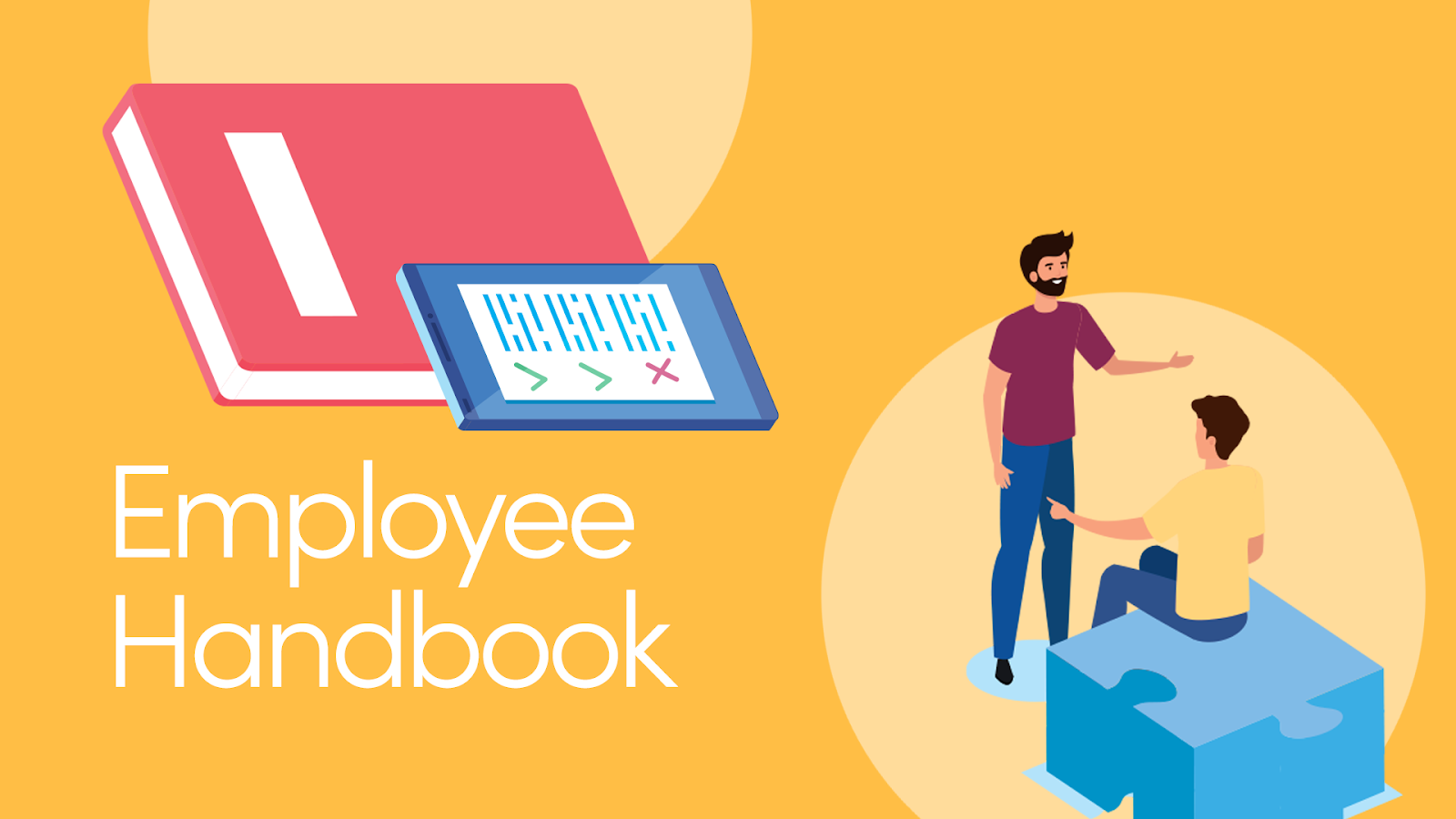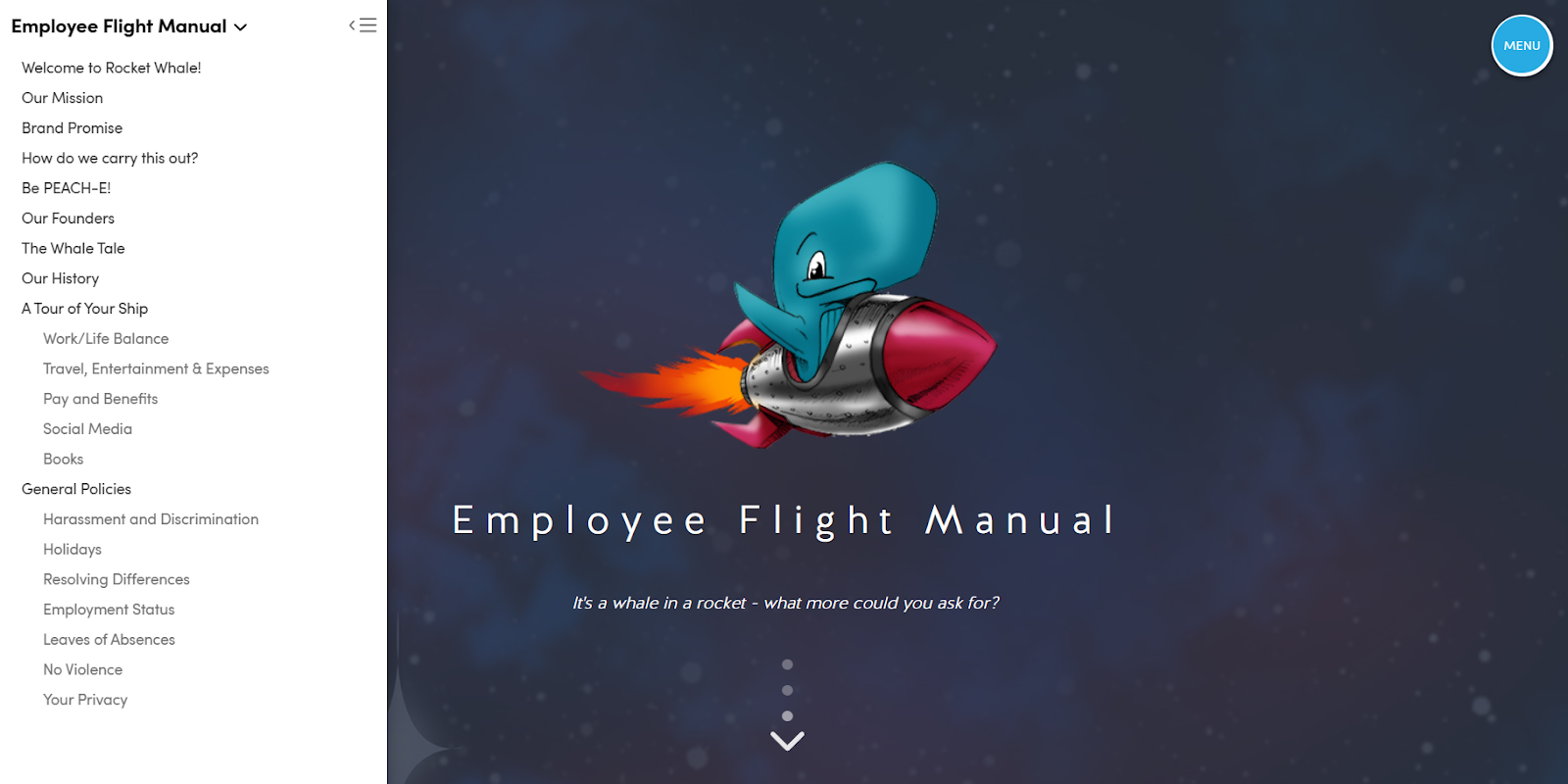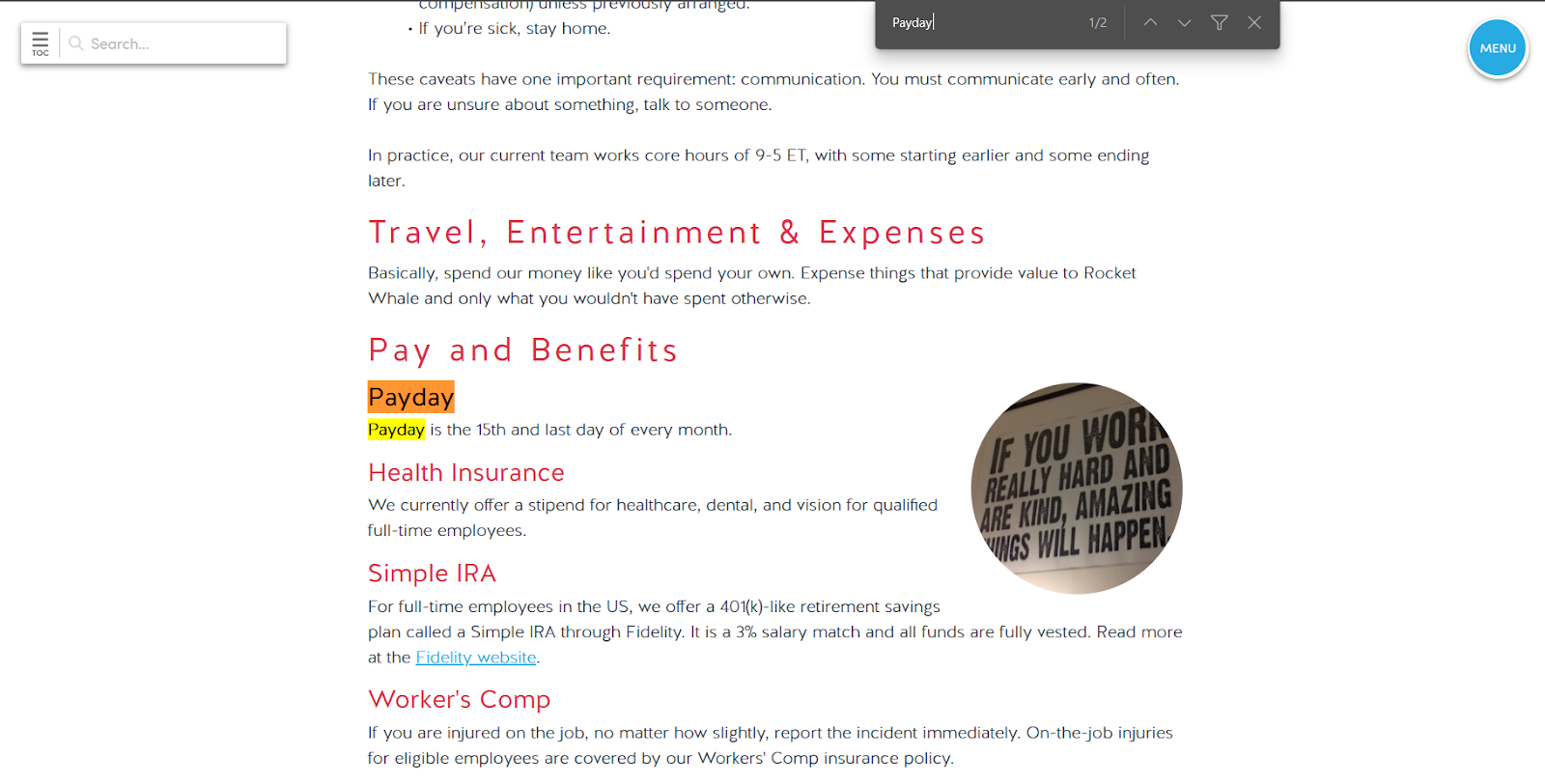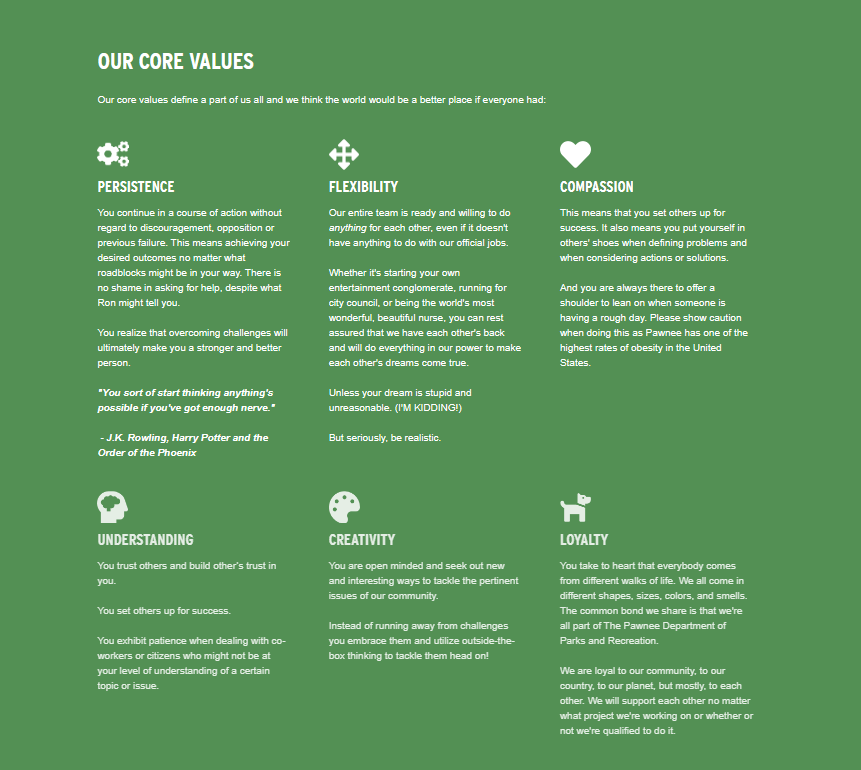7 Guidelines You Should Know When Creating an Employee Handbook
An employee handbook should do more than gather dust on a shelf. So, what does it take to create an effective employee handbook that strikes the balance between workplace policies and the nuances of your company culture?
In this article, we’ll walk you through seven guidelines to keep in mind as you craft or refine your employee handbook. We’ll even provide actionable tips and share best practices to inspire you along the way.
By the end of this read, you’ll be well equipped to create an employee handbook that protects your company while building a productive and inclusive work environment.
Let’s get started!
Why is it Important to Have an Employee Handbook?

An employee handbook, also known as a staff manual or employee manual, is a comprehensive document that outlines your company’s policies, procedures, and expectations. Some elements of an employee handbook aid employers in fulfilling legal obligations.
Your handbook provides several benefits to employees, helping them understand the norms and values they are expected to demonstrate. Employee handbooks often cover a lot of content, ranging from your company’s mission and values to practical matters like overtime work, lactation accommodations, and drug and alcohol use.
Learn more about why you should create an employee handbook.
What are the Employee Handbook Must-Haves?

Employee handbook contents may vary depending on an organization’s size, industry, and location. However, here are some of the most common things you’ll find in an employee handbook.
- A Welcome Message: Welcomes employees to your organization with a warm introduction, often included as a letter from the CEO or founder.
- Company Overview: Outlines your company’s culture, highlighting your mission, vision, and values. This helps employees understand what your organization stands for and why it exists.
- Employment Policies: Details items like employment status, job classifications, personnel records, performance evaluations, promotion and transfer policies, and termination procedures.
- Compensation and Benefits: Explains payroll procedures, work hours, overtime compensation, salary considerations, bonus plans, health benefits, retirement plans, and other perks.
- Code of Conduct: Provides expectations regarding professional behavior, ethics, conflicts of interest, and your company’s commitment to honest and ethical conduct.
- Health and Safety: Communicates the measures you take to maintain a safe and healthy work environment, such as your weapons policy, emergency procedures, and how to report unsafe conditions.
- Use of Company Property and Technology: Outlines the use of company assets, such as equipment, vehicles, and communication systems/technology.
- Disciplinary Procedures: Details how your organization handles breaches of policy, including the disciplinary process and potential consequences.
- Grievance Procedures: Conveys how employees can voice concerns or complaints and the conflict resolution process.
- Employee Acknowledgement: Captures employee signatures to affirm receipt of the handbook.
7 Guidelines for Creating an Employee Handbook
We’ve compiled seven guidelines to help you design an effective employee handbook that showcases your company’s culture and emphasizes compliance.
1. Make it understandable
While your handbook should include detailed policies and procedures, the information should be presented in a way that’s easy to understand and jargon-free. Long, convoluted sentences can leave room for misinterpretation. Instead, opt for short, direct sentences, bullet points, and clear subheadings.
By using clear, concise language, you make it easier for employees to comply, leading to better outcomes all around.
2. Keep it legal
Always involve a legal expert in creating or revising your employee handbook. This ensures that your policies are not just accurate but also legally sound.
Remember, different geographic locations often have their own laws regarding employment. Ensure your handbook complies with all federal, state, and local laws, especially if your company operates in multiple locations.
3. Make it accessible
Whether you distribute your handbook physically or electronically, ensure it’s readily available to all employees. Consider creating a digital version (using a platform like Blissbook!) that can be easily updated and viewed anytime, anywhere.
If necessary for your workforce, you should also translate the handbook into different languages. Handbook accessibility is key.
4. Ensure it’s user-friendly

Create a clear, logical structure for your handbook with headings, subheadings, bullet points, and a detailed table of contents. One perk of creating an electronic handbook is that employees can perform a keyword search to quickly navigate to the information they need, saving time and frustration.
5. Keep it up-to-date
Regularly update your handbook to reflect changes in the legal landscape, industry regulations, or internal company policies. Each time the handbook is updated, ensure the new version is distributed to all your employees, highlighting the changes.
6. Include real-life examples
Incorporating sample scenarios in your handbook can help bring the seemingly abstract world of company policies to life. When you illustrate the ‘why’ and ‘how’ of your policies through real-life examples, the handbook shifts from being a bland list of dos and don’ts to a practical guide.
Consider the case of a technology use policy. Instead of simply stating, “Employees must not use company email for personal communication,” you could add: “For instance, using the company email to plan a family gathering or share personal photos can put the company’s data security at risk and is considered inappropriate.”
This gives employees additional context that conveys why the policy is in place and what actions could lead to violations.
7. Emphasize your company culture

Make sure your handbook includes your organization’s mission, vision, values, and more. Let’s say your company places a high value on innovation and creativity. Highlight this in your handbook. Share stories of how employees’ innovative ideas have driven success in the past, or explain how the company supports and rewards creative thinking.
Or, if your organization prides itself on its commitment to social responsibility, include sections on your environmental policies or community outreach initiatives.
Common Employee Handbook Mistakes
Crafting an effective employee handbook has its challenges, and even with the best intentions, organizations can sometimes stumble. Let’s take a look at some common mistakes organizations make while creating their handbooks.
Handbook Mistake #1 – Include inconsistent policies
One of the most frequent blunders results from policy inconsistency. Employee handbook contradictions can cause confusion, inefficiency, and even legal issues.
Inconsistencies can take many forms. Perhaps two policies provide conflicting content or there’s a mismatch between what’s stipulated in the handbook and what’s practiced day to day. Therefore, it’s essential to ensure all policies are in harmony with each other and align with your actual workplace practices.
Handbook Mistake #2 – Create legal risk
An employee handbook should mitigate legal risk, not create it. Your organization and its people must comply with certain labor laws, and your employee handbook is one of the best avenues for communicating these requirements. If you make errors or forget to include important information, you could be opening your organization up to liability.
For example, if you forget to include an equal employment opportunity statement or reasonable accommodation policy, you could inadvertently create a situation of potential discrimination. Or, if you don’t communicate an employee’s rights under the Family and Medical Leave Act (FMLA), you could face legal repercussions for interfering with someone’s right to take protected leave.
To reiterate one of our earlier guidelines, it’s wise to have your handbook vetted by legal experts to confirm you’re protecting your organization and its employees..
Handbook Mistake #3 – Forget to make updates
After crafting your handbook with care, you can’t simply mark it off your to-do list. Handbooks require ongoing updates, and failure to do so can lead to legal and operational challenges. It’s important to establish a consistent review process to keep your handbook current and maximize its effectiveness.
Most handbook updates are driven by corporate policy or legal changes, but it’s a good time to consider user feedback, too. If, for example, there has been confusion about your remote work policy, it may be a good time to address those areas of ambiguity. Maybe your HR team has fielded many questions on a certain topic and it’s time to consider adding it to the handbook.
By periodically reviewing and updating your handbook, members of your organization are more likely to turn to it first, knowing it hasn’t grown stale.
3 Tips to Successfully Implement Your Employee Handbook
The process of creating an employee handbook doesn’t end with its completion; the real challenge lies in implementing it effectively.
Here are some valuable tips to ensure a smooth rollout and reception of your handbook.
1. Conduct employee handbook training
Introducing a new employee handbook should be more than just a quick email or announcement. Consider holding dedicated training sessions where you can walk your employees through the handbook, emphasizing key policies and answering any questions they might have about how best to use it.
This ensures they understand the handbook’s contents and underscores the importance you place on these policies. Depending on your company setup, these sessions can be held in person or virtually. They can be part of the onboarding process for new hires and a regular refresher for existing employees.
2. Make sure every employee has access
Every employee, new or existing, should have a copy of the handbook. If you have a physical copy, hand it out to all employees. If it’s digital, you can send it via email, make it available on your company intranet, or leverage a product like Blissbook, which enables 24/7 access.
In case of updates, promptly distribute the revised handbook and ensure all employees know the changes made.
3. Collect employee signatures
Although companies aren’t legally required to collect employee signatures, it’s a good idea to do so in case disciplinary issues or legal disputes arise. This is where acknowledgment forms come into play. Organizations can phrase the signature page so that it (1) acknowledges receipt only, (2) affirms they’ve received and read the handbook, or (3) confirms they’ve received, read, and will comply with your handbook.
If using a digital handbook platform like Blissbook, you can collect electronic signatures, which is easier for everyone. Plus, you can quickly view signature progress and send reminders within the Documentation Center.
It’s best practice to collect new signatures each time the handbook is updated.
Create, Launch, and Update Your Employee Handbook with Blissbook
Investing time and resources into creating a comprehensive employee handbook is an investment in your company’s growth.
A well-crafted handbook provides clarity and structure and fosters a sense of belonging among your employees, bridging the gap between policies and people. It paves the way for better understanding, fewer disputes, increased productivity, and, ultimately, a happier and more harmonious workplace.
Don’t know how to get started? Blissbook is here to help.
Blissbook is a user-friendly platform designed to make creating, updating, and distributing your handbook a breeze. It simplifies the process and ensures your handbook is easily accessible and engaging.
Get in touch or set up a trial to create your handbook using Blissbook today.